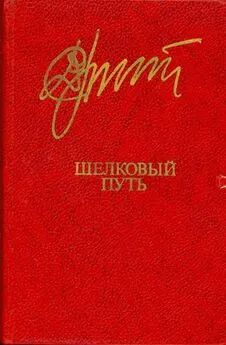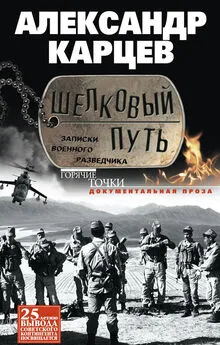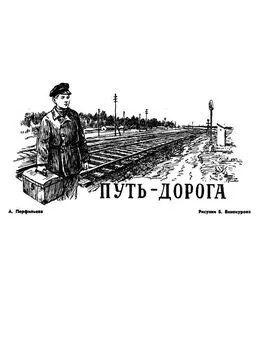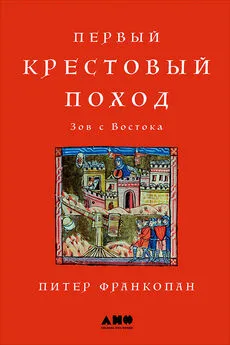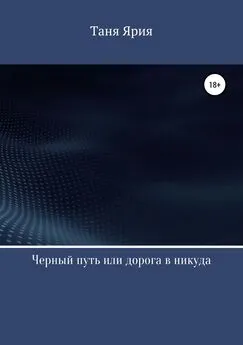Питер Франкопан - Шелковый путь. Дорога тканей, рабов, идей и религий
- Название:Шелковый путь. Дорога тканей, рабов, идей и религий
- Автор:
- Жанр:
- Издательство:Литагент 5 редакция
- Год:2017
- Город:Москва
- ISBN:978-5-699-95706-4
- Рейтинг:
- Избранное:Добавить в избранное
-
Отзывы:
-
Ваша оценка:
Питер Франкопан - Шелковый путь. Дорога тканей, рабов, идей и религий краткое содержание
Вы увидите, что история развивалась совсем не так, как мы привыкли изучать в школе. Так, столетия назад интеллектуальные центры мира, «Оксфорды» и «Кембриджи», «Гарварды» и «Йели», находились не в Европе, а в городах Средней Азии, куда и съезжалась вся просвещенная молодежь в поисках успеха.
Шелковый путь. Дорога тканей, рабов, идей и религий - читать онлайн бесплатно ознакомительный отрывок
Интервал:
Закладка:
162
M. Boyce and F. Grenet, A History of Zoroastrianism (Leiden, 1991), рр. 30–33. О зороастрийских верованиях, включая молитвы и вероучения, см. Boyce, Textual Sources , рр. 53–61; о ритуалах и практиках – рр. 61–70.
163
J. Harmatta, ‘Late Bactrian Inscriptions’, Acta Antiqua Hungaricae 17 (1969), рр. 386–388.
164
M. Back, ‘Die sassanidischen Staatsinschriften’, Acta Iranica 18 (1978), рр. 287–288.
165
S. Shaked, ‘Administrative Functions of Priests in the Sasanian Period’, in G. Gnoli and A. Panaino (eds), Proceedings of the First European Conference of Iranian Studies , 2 vols (Rome, 1991), 1, рр. 261–273; T. Daryaee, ‘Memory and History: The Construction of the Past in Late Antiquity’, Name-ye Iran-e Bastan 1.2 (2001–2002), рр. 1–14.
166
Back, ‘Sassanidischen Staatsinschriften’, р. 384. Полную надпись см. в M. – L. Chaumont, ‘L’Inscription de Kartir à la Ka ʿbah de Zoroastre: text, traduction et commentaire’, Journal Asiatique 248 (1960), рр. 339–380.
167
M.-L. Chaumont, La Christianisation de l’empire iranien, des origines aux grandes persécutions du IV siècle (Louvain, 1988), р. 111; G. Fowden, Empire to Commonwealth: Consequences of Monotheism in Late Antiquity (Princeton, 1993), рр. 28–29.
168
R. Merkelbach, Mani und sein Religionssystem (Opladen, 1986); J. Russell, ‘Kartir and Mani: A Shamanistic Model of their Conflict’, Iranica Varia: Papers in Honor of Professor Ehsan Yarshater (Leiden, 1990), рр. 180–193; S. Lieu, History of Manicheanism in the Later Roman Empire and Medieval China: A Historical Survey (Manchester, 1985). О Шапуре и Мани см. M. Hutter, ‘Manichaeism in the early Sasanian Empire’, Numen 40 (1993), рр. 2–15.
169
Р. Gigoux (ed. and tr.), Les Quatre Inscriptions du mage Kirdir, textes et concordances (Paris, 1991). А также C. Jullien and F. Jullien, ‘Aux frontières de l’iranité: “nasraye” et “kristyone” des inscriptions du mobad Kirdir: enquête littéraire et historique’, Numen 49.3 (2002), рр. 282–335; F. de Blois, ‘ Naṣrānī Ν αζωραȋος ) and ḥanīf ( ἐθνικός ): Studies on the Religious Vocabulary of Christianity and of Islam’, Bulletin of the School of Oriental and African Studies 65 (2002), рр. 7–8.
170
S. Lieu, ‘Captives, Refugees and Exiles: A Study of Cross-Frontier Civilian Movements and Contacts between Rome and Persia from Valerian to Jovian’, in Р. Freeman and D. Kennedy (eds), The Defence of the Roman and Byzantine East (Oxford, 1986), рр. 475–505.
171
A. Kitchen, C. Ehret, S. Assefa and C. Mulligan, ‘Bayesian Phylogenetic Analysis of Semitic Languages Identifies an Early Bronze Age Origin of Semitic in the Near East’, Proceedings of the Royal Society B , 276.1668 (2009), рр. 2702–2710. Некоторые исследователи говорят о североафриканском происхождении семитских языков, например, D. McCall, ‘The Afroasiatic Language Phylum: African in Origin, or Asian?’, Current Anthropology 39.1 (1998), рр. 139–144.
172
R. Stark, The Rise of Christianity: A Sociologist Reconsiders History (Princeton, 1996), и R. Stark, Cities of God: The Real Story of How Christianity Became an Urban Movement and Conquered Rome (San Francisco, 2006). Взгляды и методология Старка оказались противоречивыми, см. Journal of Early Christian Studies 6.2 (1998).
173
Pliny the Younger, Letter 96, ed. and tr. B. Radice, Letters and Panegyricus , 2 vols (Cambridge, MA, 1969), 2, рр. 284–286.
174
Там же, Letter 97, 2, рр. 290–292.
175
J. Helgeland, R. Daly and Р. Patout Burns (eds), Christians and the Military: The Early Experience (Philadelphia, 1985).
176
M. Roberts, Poetry and the Cult of the Martyrs (Ann Arbor, 1993); G. de Ste Croix, Christian Persecution, Martyrdom and Orthodoxy (Oxford, 2006).
177
Tertullian, Apologia ad Nationes , 42, in Tertullian: Apology: De Spectaculis , ed. and tr. T. Glover (London, 1931), р. 190; G. Stoumsa, Barbarian Philosophy: The Religious Revolution of Early Christianity (Tübingen, 1999), рр. 69–70.
178
Tertullian, Apologia , 8, р. 44.
179
W. Baum and D. Winkler, Die Apostolische Kirche des Ostens (Klagenfurt, 2000), рр. 13–17.
180
S. Rose, Roman Edessa: Politics and Culture on the Eastern Fringes of the Roman Empire, 114–242 CE (London, 2001).
181
T. Mgaloblishvili and I. Gagoshidze, ‘The Jewish Diaspora and Early Christianity in Georgia’, in T. Mgaloblishvili (ed.), Ancient Christianity in the Caucasus (London, 1998), рр. 39–48.
182
J. Bowman, ‘The Sassanian Church in the Kharg Island’, Acta Iranica 1 (1974), 217–220.
183
The Book of the Laws of the Countries: Dialogue on the Fate of Bardaisan of Edessa , tr. H. Drijvers (Assen, 1965), р. 61.
184
J. Asmussen, ‘Christians in Iran’, in The Cambridge History of Iran: The Seleucid, Parthian and Sasanian Periods (Cambridge, 1983), 3.2, рр. 929–930.
185
S. Brock, ‘A Martyr at the Sasanid Court under Vahran II: Candida’, Analecta Bollandiana 96.2 (1978), рр. 167–181.
186
Eusebius, Evaggelike Proparaskeus , ed. K. Mras, Eusebius Werke: Die Praeparatio Evangelica (Berlin, 1954), 1.4, р. 16; A. Johnson, ‘Eusebius’ Praeparatio Evangelica as Literary Experiment’, in S. Johnson (ed.), Greek Literature in Late Antiquity: Dynamism, Didacticism, Classicism (Aldershot, 2006), р. 85.
187
Р. Brown, The Body and Society: Men, Women and Sexual Renunciation in Early Christianity (London, 1988); C. Wickham, The Inheritance of Rome: A History of Europe from 400 to 1000 (London, 2009), рр. 55–56.
188
B. Dignas and E. Winter, Rome and Persia in Late Antiquity (Cambridge, 2007), рр. 210–232.
189
См. A. Sterk, ‘Mission from Below: Captive Women and Conversion on the East Roman Frontiers’, Church History 79.1 (2010), рр. 1–39.
190
О конверсии см. R. Thomson (ed. and tr.), The Lives of St Gregory: The Armenian, Greek, Arabic and Syriac Versions of the History Attributed to Agathaneglos (Ann Arbor, 2010). W. Seibt, Die Christianisierung des Kaukasus: The Christianisation of Caucasus (Armenia, Georgia, Albania) (Vienna, 2002), и M.-L. Chaumont, Recherches sur l’histoire d’Arménie, de l’avènement des Sassanides à la conversion du royaume (Paris, 1969), рр. 131–146.
191
Eusebius of Caesarea, Bios tou megalou Konstantinou , ed. F. Winkelmann, Über das Leben des Kaisers Konstantin (Berlin, 1992), 1.28–30, рр. 29–30. Об обращении Константина и в целом о ситуации в то время см. сборник эссе N. Lenski (ed.), The Cambridge Companion to the Age of Constantine (rev. edn, Cambridge, 2012).
192
Sozomen, Ekklesiastike Historia , ed. J. Bidez, Sozomenus: Kirchengeschichte (Berlin, 1995), 2.3, р. 52.
193
Eusebius, Bios tou megalou Konstantinou , 2.44, р. 66.
194
A. Lee, ‘Traditional Religions’, in Lenski, Age of Constantine , рр. 159–180.
195
Codex Theodosianus , tr. C. Pharr, The Theodosian Code and Novels and the Simondian Constitutions (Princeton, 1952), 15.12, р. 436.
196
Eusebius, Bios tou megalou Konstantinou , 3.27–8, р. 96.
197
Там же, 3.31–2, р. 99.
198
Р. Sarris, Empires of Faith (Oxford, 2012), р. 22–23.
199
Eusebius, Vita Constantini , 4.13, р. 125; перевод в Dodgeon and Lieu (eds), The Roman Eastern Frontier and the Persian Wars A. D. 226–363: A Documentary History (London, 1991), р. 152. Даты см. в G. Fowden, Empire to Commonwealth: Consequences of Monotheism in Late Antiquity (Princeton, 1993), рр. 94–99.
200
J. Eadie, ‘The Transformation of the Eastern Frontier 260–305’, in R. Mathisen and H. Sivan (eds), Shifting Frontiers in Late Antiquity (Aldershot, 1996), рр. 72–82; M. Konrad, ‘Research on the Roman and Early Byzantine Frontier in North Syria’, Journal of Roman Archaeology 12 (1999), рр. 392–410.
201
Sterk, ‘Mission from Below’, рр. 10–11.
202
Eusebius, Vita Constantini , 5.56, р. 143; 5.62, рр. 145–146.
203
T. Barnes, ‘Constantine and the Christians of Persia’, Journal of Roman Studies 75 (1985), р. 132.
204
Aphrahat, Demonstrations , M. – J. Pierre, Aphraate le sage person: les exposés (Paris, 1988–1989), no. 5.
205
J. Walker, The Legend of Mar Qardagh: Narrative and Christian Heroism in Late Antique Iraq (Berkeley, 2006), 6, р. 22.
206
См. в целом J. Rist, ‘Die Verfolgung der Christen im spätkirchen Sasanidenreich: Ursachen, Verlauf, und Folgen’, Oriens Christianus 80 (1996), рр. 17–42. Доказательства не без проблем интерпретации – S. Brock, ‘Saints in Syriac: A Little-Tapped Resource’, Journal of East Christian Studies 16.2 (2008), рр. 184–186.
207
J. Wiesehöfer, Ancient Persia, 500 BC to 650 AD (London, 2001), р. 202.
208
O. Knottnerus, ‘Malaria in den Nordseemarschen: Gedanken über Mensch und Umwelt’, in M. Jakubowski-Tiessen and J. Lorenzen-Schmidt, Dünger und Dynamit: Beiträge zur Umweltgeschichte Schleswig-Holsteins und Dänemarks (Neumünster, 1999), рр. 25–39; Р. Sorrel et al., ‘Climate Variability in the Aral Sea Basin (Central Asia) during the Late Holocene Based on Vegetation Changes’, Quaternary Research 67.3 (2007), рр. 357–370; H. Oberhänsli et al., ‘Variability in Precipitation, Temperature and River Runoff in W. Central Asia during the Past ~2000 Yrs’, Global and Planetary Change 76 (2011), рр. 95–104; O. Savoskul and O. Solomina, ‘Late-Holocene Glacier Variations in the Frontal and Inner Ranges of the Tian Shan, Central Asia’, Holocene 6.1 (1996), рр. 25–35.
Читать дальшеИнтервал:
Закладка:


